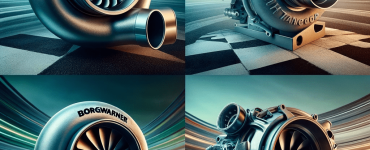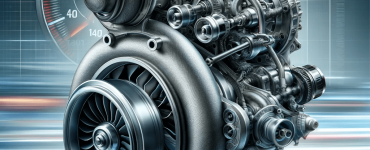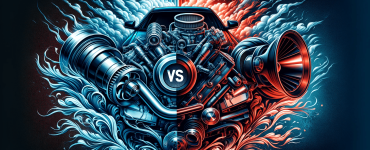Turbochargers vs Superchargers: Navigating the Heat Management Maze
Key Takeaways:
| Aspect | Turbocharger | Supercharger |
|---|---|---|
| Primary Heat Source | Exhaust gases | Engine’s crankshaft |
| Heat Management Complexity | High, requires intercoolers | Lower, less heat generated |
| Impact on Engine | Potential for heat-induced engine damage | Lower risk of heat-related damage |
| Efficiency in Heat Dissipation | Requires additional components for cooling | Direct air intake, simpler cooling needs |
| Suitability in Racing | Effective with proper heat systems | Preferred for less complex heat management |
Understanding Forced Induction and Heat
Forced induction in engines, through turbochargers or superchargers, increases the amount of air entering the combustion chamber, thereby enhancing power output. However, this process also introduces heat as a byproduct, which needs to be managed effectively to maintain engine performance and longevity.
Heat Management in Turbochargers

Turbochargers use exhaust gases to power a turbine, which then compresses air into the engine. This process generates significant heat, especially since turbos run at extremely high RPMs. To manage this heat, turbochargers typically require intercoolers to reduce the intake temperature, creating more energy-dense air for combustion. The need for additional cooling components like air vents and intercoolers complicates the design and can increase costs.
Heat Management in Superchargers
Superchargers, being mechanically driven by the engine’s crankshaft, produce less heat compared to turbochargers. This lower heat production means superchargers can sometimes send air directly into the engine without the need for an intercooler. The simpler design of superchargers leads to a more straightforward approach to heat, which can be beneficial for reliability and power production.

Impact on Performance and Reliability
In racing scenarios, effective heat management is crucial. Turbochargers, while offering significant power boosts, may pose a higher risk for heat-induced engine damage or pre-detonation, especially without proper cooling systems. In contrast, superchargers, due to their lower heat output and simpler design, often have a longer lifespan and pose fewer risks to engine integrity.
Conclusion: Choosing the Right System for Your Vehicle
When selecting a turbocharger or supercharger for your vehicle, especially in a high-performance or racing context, it’s essential to consider the heat management capabilities of each system. Turbochargers might offer more power, but they require more complex and efficient cooling solutions. Superchargers, on the other hand, offer a more straightforward approach to heat management, making them a reliable choice for scenarios where simplicity and consistent performance are key.
In conclusion, understanding the differences in heat management between turbochargers and superchargers is vital for optimizing the performance and longevity of high-performance vehicles. Each system has its unique advantages and challenges, and the right choice depends on the specific requirements of your vehicle and racing conditions.
Turbocharger vs Supercharger: Heat Management Q&A
| Question | Turbocharger | Supercharger |
|---|---|---|
| What is the primary heat source? | Exhaust gases, leading to high temperatures. | Engine’s crankshaft, leading to relatively lower temperatures. |
| How complex is heat management? | High complexity due to the need for intercoolers and additional cooling components. | Less complex, often doesn’t require an intercooler. |
| What is the risk of heat-induced engine damage? | Higher risk, especially without adequate cooling systems. | Lower risk due to less heat production. |
| What are the cooling component needs? | Requires intercoolers and additional cooling systems like air vents. | Simpler cooling needs, sometimes no intercooler required. |
| How suitable are they for racing in terms of heat management? | Effective in racing with proper heat management systems, but requires attention. | Preferred for racing due to simpler and more efficient heat management. |
| How does heat affect performance? | Excessive heat can cause pre-detonation or “ping,” limiting power gains. | Lower heat levels contribute to more consistent power delivery and reliability. |
| What is the impact on fuel combustion? | Heat robs the engine of power, necessitating timing adjustments and cooling. | More straightforward air intake process, leading to efficient fuel combustion. |




